- Home
- Barry Unsworth
Crete Page 9
Crete Read online
Page 9
On the floor above, however, lightness returns to the spirit. Here are the rooms devoted to Minoan wall paintings. Their qualities of gaiety and elegance and exuberant color are undeniable. More doubtful is the accuracy with which some of them have been reconstituted from the fragments of fresco, sometimes very scanty, that remained. Much dedicated scholarship has gone to reassembling these fragments, but also a considerable amount of dubious ingenuity and wishful thinking. Perhaps the most famous example of this, and among the most famous of all Minoan frescoes, is the “Prince with Lilies,” as he still continues, in spite of everything, to be called. Wasp-waisted, naked but for a loincloth, he wears a garland of lilies and a plumed crown, and he walks among flowers, holding an animal thought to be a griffin on a leash. Arthur Evans himself privately considered the fragments from which the prince was assembled to be quite unconnected, the head belonging to a king or god, the torso to an athlete of some kind, the rest of the body to someone else altogether. But who would be content with a barrowload of painted plaster chips when he could make a prince out of it? Evans succumbed, as sometimes before, to the desire to add luster to the world he had uncovered. The restorers, perhaps wanting to please him, on their own initiative painted over some parts to give an impression of unity to the assemblage.
The prince remained unquestioned for half a century, until 1960, when it was discovered, quite by accident, that the animal on the leash was not a griffin but a sphinx, and furthermore that it was the sphinx who should be wearing the plumed diadem, not the man at all. When faith is once disturbed, queries multiply. It began to be pointed out that the neck was joined to the torso at an extremely odd angle, that in terms of human anatomy the pose was impossible, that he could not be leading any kind of animal, whether legendary or real. More recently he has been declared to be not a prince at all but the god of eternal youth, flanked by two sphinxes, both crowned with plumed headdresses. But, others ask, if he is a god, why does he have the hairstyle normally depicted in Cretan art as belonging to a priestess?
And so it goes on. Clearly the representation as it stands is wrong in just about every way it could be. The only thing they got right was the lilies. This may not amount to fraud, but it is certainly a long-sustained deception. Does it really matter? In the course of the century since he was put together, the prince has taken on symbolic force. The fresco is a false image that exposure to millions of people has made true, embedded in popular imagination as the essential expression of Minoan elegance and vivacity of spirit. The original is still on display, among the most treasured possessions of the museum; and a copy still stands under the portico of the south entrance to the palace of Knossos where Evans placed it in 1901, a potent proof—if we needed another—of the power of the image to transcend objective categories of truth and falsehood.
CHAPTER SIX
PEACE AMID the CLAMOR
East of Iraklion lies the fourth province of Crete, Lasithi, with a high plateau at the heart of it and the sweep of Mirabello Bay as its open face, sheltered to the north by the headland of Agios Ioannis.
Mountain plains—like caves and gorges—are a special feature of Crete; the island numbers dozens or scores or hundreds, depending on the limits of dimension one sets on them. But the Lasithi Plateau is the biggest of them—the biggest flat area on the island. It forms a rough oval, rising to three thousand feet above sea level, eleven and a half square miles in area, entirely surrounded by higher mountains, dotted with thousands of stone windmills installed by the Venetians to irrigate the plain. These are picturesque with their cloth sails and they attract many visitors, but much of the work is done nowadays by gas-driven pumps. It is a fertile region, producing fruit and vegetables in abundance. Even if the windmills have mainly fallen into disuse, the plateau is worth the tortuous fifteen miles of road from Neapoli for the spectacular views, for the experience of an agrarian economy which is, taken acre for acre, one of the most productive anywhere to found.
The vast majority of visitors to the Lasithi Plateau come by bus and stay only for the middle hours of the day. The onslaught is heavy for such a small area, but by early evening almost everyone has left again, and the villages that surround the plateau continue the patterns of traditional life. The influx is contained and released, inhaled and exhaled, like breathing. The rhythms of local existence are disturbed, no doubt, but not much damaged. This is unfortunately not the case with some of the beach resorts to the north. The outskirts of Elounda, on the western side of Mirabello Bay, provide some of the worst examples on the island of the unbridled and haphazard building that has taken place in the rush to get in on the tourist boom.
Negotiating a succession of hairpin bends on the narrow road up to the hotel, we saw a car, victim of an accident, left at the roadside. There was always a damaged car in that same spot, all through the time of our stay there, but the truly alarming thing was that the cars kept changing. Taking this as evidence of frequent collisions on this road, we attempted to use a bus. There was a sort of agreement—or so we understood—between the hotel and the bus company that buses would stop near the hotel to pick up guests. But the drivers seemed unaware of this agreement and went sailing past, so we had to trudge back to the hotel and use the car after all.
This was a minor irritation. But we were both appalled by what had been done to the place itself. For years now an incessant, piecemeal building of vacation accommodations has been going on here, without regard to the rights of access to the coastal hillsides and the shore itself. A great deal of money has gone into this, both public and private, but very little has been invested in projects less immediately profitable, like communications, public transport, services generally. The roads, which are among the busiest in the region, are more or less what they always were, narrow, badly built, and badly surfaced, ever more fume-laden and dangerous. The lower roads, down toward the shore, have been so much encroached upon in the process of building that they are in places too narrow for cars to pass one another without complicated maneuvering, hemmed between the walls of the hotels that stretch ever farther up the hillsides, clambering up like competing plants in a forest, striving for star ratings, a view of the sea.
A dream sea. We had a piece of it to look at from our balcony, or from the poolside. But just try to get there. By and large, there is no way for people staying in these hotels or apartment blocks to explore the locality in which they find themselves. They certainly can’t walk anywhere, not with any pleasure. The roads are too harassing and too dangerous. And you can’t get off them because everything is staked out and fenced off.
The result of all this, locally around Elounda, as in other places on this north coast of Crete, is truncated hillsides partitioned off into lots, little tracts of noman’s-land awaiting the developer, the occasional acre or two of weeds and shrub, then perhaps a small olive grove that someone still clings to, fenced around with barbed wire. Dotted here and there are gaunt, unfinished buildings, roofless, the concrete framework a dark gray color, awaiting the owner’s next burst of prosperity to be converted into yet more vacation accommodations of one sort or another. This uniquely beautiful island, with its long history of human habitation, its landscape at once rugged and mild—the mingling that results from people living in harmony with their surroundings—has had substantial parts of its coastal regions stripped of sense and order in a matter of a few decades.
Not much point now in wondering what combination of greed, ignorance, lack of civic sense, and care for the environment could have led to this state of things. What has been missing is what is always missing, in Crete as in a thousand other places, cooperation between citizen and municipal authority, the ability of local communities, often traditionally poor, to withstand the invasion of capital and so take a longer view, retain some space for human purposes other than the single one of spending money, open the land to people instead of closing it. But this would mean admitting the inadmissible: that constant growth is a chimera, that the stream can dry up, th
at unlimited numbers of free-spending people cannot be accommodated in a limited space, and that continued attempts to do it will foul up the very thing that the people came for in the first place.
These gloomy thoughts gathered in us but were then dispersed again, dispelled by the sheer, inalienable beauty of the island, which is still, despite all such brutalizing, the truth of it. There is the light, first and foremost. Even the ravaged hillsides of Elounda can seem healed and restored by the benediction of Cretan sunlight. At the changing of the seasons, spring into summer and summer into autumn, there are days of quick transition from overcast skies to periods of clear weather, with extraordinary effects of contrast in the quality of vision. The haze shifts and for some moments everything is seen in a shaft of brilliant light, every slightest gradation of color in the sea, every detail of the horizon, all clear to the point of hallucination. Looking east from Elounda you see the small island of Psira, far out in the bay, suddenly distinct as if someone had snatched away a veil from it, while the headland of Mohlos beyond is still shrouded in a pale violet haze, only just discernible, with the most tenuous of dividing lines between sea and landmass and sky. In this weather the moon goes through spectral changes, at first dark red as it clears the cliffs, then gold, then white as it climbs free of the haze.
And then there is the abiding fact that a little effort will take you clear of crowds into places where you can feel the spell of solitude. A journey of three miles north from the clutter of Elounda, following the coast road toward the tip of the Agios Ioannis headland, brings you to the tranquil resort of Plaka, with its pebbled beach, translucent sea, and tavernas fronting the shore, with fresh fish on offer. Quitting the road and taking the track that leads farther north along the hillside, just above the sea, we found ourselves after ten minutes quite alone. We also found ourselves embarked on a very memorable walk.
No habitations here, no cars—and on the day we did this walk no people, except a young Finnish couple who were setting out along the track as we returned. It is very rare to find a Cretan walking for pleasure. It seems to them a meaningless and redundant activity, perhaps even slightly mad.
The only sounds on this summer day were birdsong and, at first, distant voices from across the water, where boatloads of people were landing on the island fortress of Spinalonga, just beyond the humped promontory below us, which bears the same name. This small island has had a checkered and in some ways chilling history, though it has also been the scene of a moving and courageous human enterprise practically without parallel elsewhere.
The Venetians had already been masters of Crete for more than three hundred years when they decided to fortify the island to guard the approaches to the western side of the gulf and the sheltered anchorages south of the promontory. The remains of the fortress they built are extensive and well preserved, though much overgrown and hazardous to explore. The high walls on the north side, with their crenellations and escarpments—clearly visible to us from the track we were following high above—are cunningly incorporated into the granite of which the island is made. The whole construction is an astonishing feat of engineering. The island was virtually impregnable, and even after the Turkish conquest of Crete in 1669 it did not fall into their hands for another half century—not until 1715. And even then it was not taken by force but ceded by treaty.
Starting with the few Ottoman troops left as a garrison, the population grew until by the end of the nineteenth century more than a thousand families of Turkish descent were living on the island, all of them devoted to the thriving local industry of smuggling. This was so lucrative that even after 1898, when Crete was declared autonomous, the Turks of Spinalonga refused to leave their homes. In 1903, however, they fled en masse when the Cretan Republic under Prince George decided to make the island a leper colony. The story of this colony has been well related by Beryl Darby, and I am indebted to her for many of the details that follow.
Leprosy was still at that time one of the most feared of human diseases, because of its contagiousness, the terrible disfigurements it brought about, the progressive degeneration of the body that accompanied it. And because it was so feared, those who suffered from it were treated as outcasts. Several hundred lepers, men and women, were taken from the caves and shacks where they had been living, all over Crete, and brought here. In these early years, isolated on the island, they were in desperate straits, neglected and abandoned, often in great pain, obliged to fend for themselves without medical attention or regular supplies of food and fresh water, unable to treat the suppurating wounds which are characteristic of the disease. All looked peaceful below us that day: the glittering expanse of the bay, the ferries plying across from Agios Nikolaos and Elounda. But if that little island could voice its own past, the voice would come as a single cry of suffering.
As the century advanced, things got better. A new contingent of lepers was sent to Spinalonga from Athens, people on the whole better educated, less resigned—they numbered lawyers and teachers among them. With the help of the lepers already there, they struggled to establish a community, repairing the dilapidated houses vacated by the Turks, quarrying their own stone to do it. They constructed cisterns to collect rainwater and used the open fireplaces in the old Turkish laundry to heat the water so they could keep their sores clean. They printed their own newspaper, with news of various events on the island. They even built a theater and put on plays. Above all, they assumed responsibility for one another, the stronger attending to the weaker, making sure that no one died alone. It is a story of courage and cooperation under the most terrible conditions and should have pride of place in the annals of heroism.
The last lepers on Spinalonga—the thirty still alive—were transferred to mainland hospitals in 1957. It is a strange experience now to walk about on the island among the decaying houses of the lepers and the scattered ruins of the fort, where the garrisons of the conquerors and the community of the sick once lived and died. This is only a ghost town, with rotting timbers and listing walls and hanging shutters. Some signs of those former lives still remain. The lepers’ disinfection room and dispensary are still there, and there are some marks of domestic life: an old basket on a shelf, a tilted cupboard with doors hanging open, a bank of red geraniums growing over a doorway.
The track ascended, Spinalonga was left behind, the bay of Mirabello opened before us, with the mountainous headlands one beyond the other, stretching away east toward Sitia. On the landward side, the hills rose steeply, marked by the dark green of the carob trees, with their lighter clustering pods, and flowering phrygana plants in domed clumps and granite outcrops weathered here and there to a warm red-brown. The mid-morning sun brought out waves of scent, at times almost dizzying, from the aromatic scrub all around us. One can range at will in the Cretan maquis—no venomous snakes lurk here, or anywhere else on the island, which is a very agreeable piece of knowledge for the walker, who has enough to do avoiding the spiny plants that grow everywhere. It seems that there never have been fanged snakes on Crete. Their absence, typically enough, has been explained by stories. In antiquity Herakles was said to have banished them; later this feat was attributed to St. Paul the Apostle, who was bitten by a snake—on Crete, the Cretans say, wanting their island to be the scene of everything, even of disasters; but it was on Malta that it seems to have happened.
Perhaps to make up for this deficiency in the element of danger, a body of folklore has grown up around a lizard of snakelike appearance called liakoni, which, though entirely harmless, is still commonly believed by the country people to have a life-threatening bite. In fact, the only really dangerous customer on the island is the Mediterranean black widow spider, recognizable by its black and hairy abdomen, a piece of information I owe to the excellent Natural History Museum of Iraklion. I have never encountered this spider in the flesh, and I hope this lack of acquaintance will long continue.
We walked on and the solitude settled around us. This, in its peace and tranquility, in the heat-haze
d shapes of mountains across the bay and the melting line of the horizon where sea meets sky with a blue that belongs to neither, this is among the most beautiful places our Earth has to show. We found ourselves fervently hoping that it would be left alone for anyone to enjoy, that people were not sitting in some office at that very moment, making dire plans to develop it.
The light is so extraordinary—one keeps coming back to that. It is soft and radiant yet at the same time relentlessly clear. Cretans on the whole, like their compatriots on the mainland, have not been much given to folktales of the darker sort, those featuring threatened children and ambiguous adults liable to change masks. The light here is too clear and bold for such a tradition to develop. You need the more diffused light and more enveloping shadow of northern latitudes for that. There is in Crete, of course, as all over Greece, a prevalent belief in the evil eye, and this is certainly an ambiguous matter, because anyone can have it and exercise it without in the least being aware, conscious of nothing but goodwill. On the other hand, there are those believed to possess this power and to use it malignantly and in secret. At least until recently—and perhaps still today—it was not uncommon for the village priest to be called in to expel demonic presences and purify the house. Blue beads are often used as talismans, worn about the person or hung up in a car, to ward off evil influences of this kind. Sometimes, when people have misfortunes not easy to explain in the natural course of events, they carry out tests to try to determine whether the evil eye is at work. Once I was present at such a test. It consisted of adding drops of olive oil to a glass of water: If the oil floated, which of course it should normally do, all was well; if it mingled with the water, demons were at work. This time, to everyone’s relief, the oil conformed to the laws of its nature and floated. On another occasion I was suspected of having the evil eye myself. I was giving a hand with harvesting the grapes in the vineyard of some neighbors. It started to rain in the middle of the morning and went on for two or three hours—a very unusual event for the time of year. Grapes should never be harvested wet; the skins break too easily and there is danger of mold. I was the newcomer, the stranger. It was obvious that I had brought bad luck, and behind bad luck is always the possibility of the evil eye. I was asked, politely but with unmistakable firmness, not to offer my services the next day. And sure enough, the next day it didn’t rain.

 Sacred Hunger
Sacred Hunger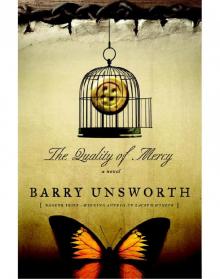 The Quality of Mercy: A Novel
The Quality of Mercy: A Novel The Songs of the Kings: A Novel
The Songs of the Kings: A Novel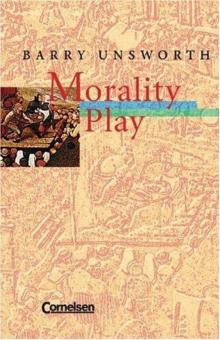 Morality Play. Mit Materialien. (Lernmaterialien)
Morality Play. Mit Materialien. (Lernmaterialien)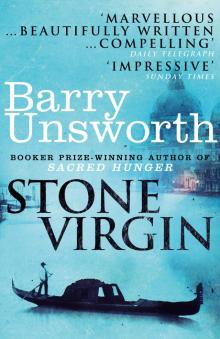 Stone Virgin
Stone Virgin Land of Marvels
Land of Marvels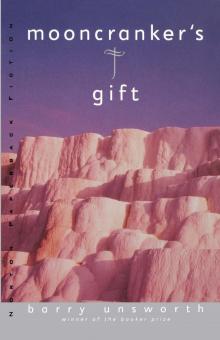 Mooncranker's Gift
Mooncranker's Gift The Greeks Have a Word for It
The Greeks Have a Word for It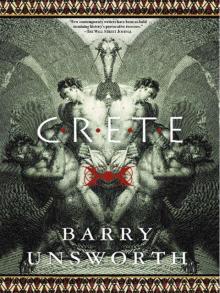 Crete
Crete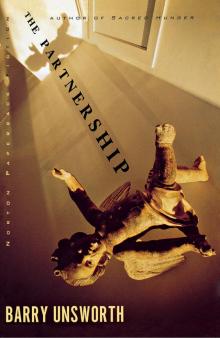 The Partnership
The Partnership The Big Day
The Big Day The Hide
The Hide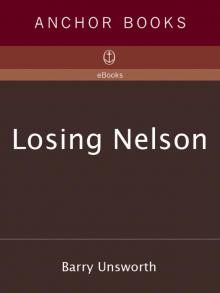 Losing Nelson
Losing Nelson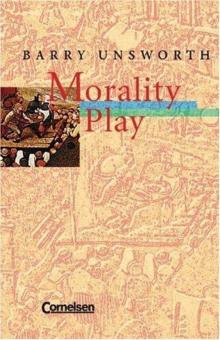 Morality Play
Morality Play Land of Marvels: A Novel
Land of Marvels: A Novel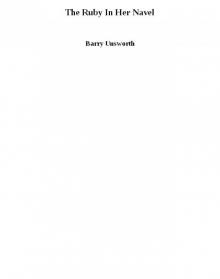 The Ruby In Her Navel
The Ruby In Her Navel